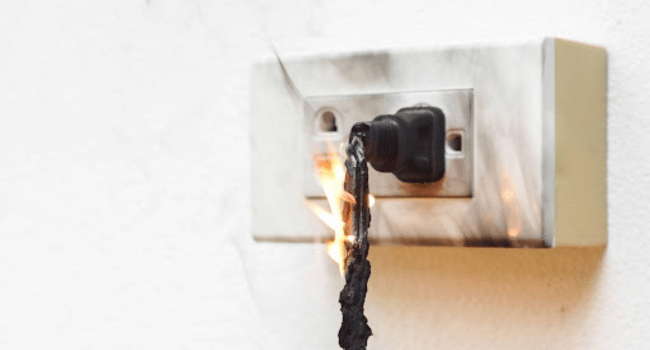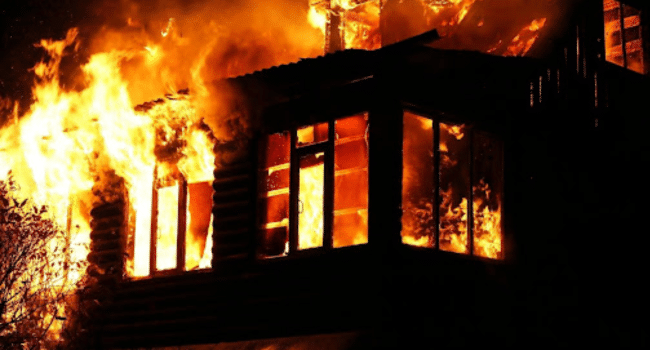Table of Contents
The incidence of electrical fires presents a pressing challenge and a serious risk, both within the confines of our homes and the broader landscape of commercial properties. As reliance on electronic devices and appliances has grown significantly, the risk of electrical fires has equally expanded. Statistics evolving over time reveal that a considerable proportion of total fire incidents are attributable to electrical fires – causing grievous injuries, loss of life, extensive property damage, and profound economic impacts. This article seeks to underscore the relevance, urgency, and necessity of employing robust strategies to prevent electrical fires and the grave importance of continually updating these methods in line with the latest best practices to ensure an optimal level of safety.
The Science Behind Electrical Fires
The essence of prevention lies in understanding and comprehending ways to prevent electrical fires; a fundamental knowledge of how they initiate and escalate is vital. An electrical fire primarily starts due to an irregular surge in the electric current, which may arise from a fault in wiring, electric panels, outlets, or electrical equipment. This fault may manifest as a short circuit, causing a rapid increase in current flow that the system isn’t designed to handle, leading to overheating or sparking that can induce combustion of nearby materials. In some instances, electric fires can result from high-resistance heating when the resistance to electric current creates heat, further igniting flammable materials nearby. With faulty or substandard wiring and improperly maintained equipment being key contributors to these unfettered incidents, ensuring their proper installation and upkeep is imperative.
Electrical fires vary in nature and type, with numerous factors influencing their origin, progression, and subsequent consequences. Class C electrical fires are notably dangerous as they involve energised electrical equipment, including transformers and electronic devices, that can fuel a fire. The dangers and damages of electrical fires are extensive and severe. Notably, the rapid rate of spread due to electric currents results in an escalated fire scenario, and there are risks of severe skin burns and hazardous smoke inhalation, demanding quick evacuation and medical attention.
Common Causes of Electrical Fires
Effectual prevention necessitates an in-depth analysis and understanding of the several causes that lead to electrical fires. Here, we will delve into some of those:
Old and outdated wiring: In many older residences and commercial buildings, the wiring systems fall short of the modern electrical safety standards required to handle today’s high-powered appliances. The result is a highly vulnerable system at the risk of short-circuits and consequential fires due to wear and tear.
Overloaded circuits and outlets: Empowering our lives with multiple electrical devices also brings about the risk of multiple devices being plugged into a single outlet, which can cause an overload. Such an overload can overload the electrical circuit, causing heat generation, melting of wires, and eventually a fire.
Threat posed by portable heaters: Portable heaters afford the convenience of mobility and compact size but if left unattended or placed close to inflammable objects, they can pose a significant fire risk.
Dangers associated with misuse of light fixtures: Light fixtures, if used improperly, can cause a fire. This can occur by fitting a light bulb with a higher wattage than recommended for the light fixture, leading to overheating and a potential fire hazard. The risk intensifies when materials are placed too close to the light fixtures.

Identifying Red Flags
For a comprehensive preventive approach, the ability to identify potential electrical hazards well in advance is crucial to preventing risks from escalating into actual fires.
Recognising signs of potential electrical problems: Certain signs signal underlying electrical problems, such as fluctuating lights, warming outlets or switches, frequently tripping circuit breakers, buzzing noise from the electrical outlet or appliance, or an unusual burning smell. It’s crucial to promptly address these issues to prevent larger hazards.
Risks of ignoring circuit breaker problems: A circuit breaker’s fundamental function is to automatically shut off electrical flow in an anomalous situation to dodge wiring overheating and potential electrical fires. Repeated tripping of a circuit breaker indicates a persistent underlying problem. Ignoring these signs could lead to a full-blown electrical emergency.
Indicators of faulty/ageing electrical appliances: Old and faulty appliances are missing out on the modern safety features compared to their newer counterparts, making them more likely to malfunction. These appliances, if defective, can become overheated or short-circuited, leading to an electrical fire. Therefore, it calls for regular checks to keep them in a good working state.
Frequent Electrical Shocks: Experiencing mild shocks when touching an appliance indicates a ground fault—an abnormal path for the current to take within an electrical device. This abnormal path can also lead the current to highly inflammable materials, igniting a fire.
Advanced Strategies for Prevention
Prevention is better than cure; the adage fits perfectly in the context of electrical fires. Below are recommended advanced strategies:
- Regular professional electrical inspections: Regular inspections by certified professionals, as recommended on https://www.benchmarkelectricaldfw.com/, can troubleshoot potential electrical hazards and maintain a safe electrical environment. They conduct a thorough hazard analysis, encompassing the examination of wiring systems, the overall electrical load, and potential risks, guiding safety improvements.
- Updating and modernising electrical systems: Embracing an upgraded electrical system featuring modern circuit breakers, outlets and high-quality wiring aligned with current norms can significantly mitigate the risks of potential electrical fires.
- Use of advanced fire-resistant materials: With advancements in science comes the development of fire-resistant materials. When used in the construction phase, these materials add an extra layer of protection, reducing the risk of fire accidents.
- Usage of smoke alarms and fire extinguishers: Smoke alarms notify the unsettlement in the environment well in advance, providing you with a crucial window to control the fire before it goes out of hand. On the other hand, fire extinguishers allow you to contain small fires before it escalates.
Training and Practising Fire Safety Protocols
Every individual and organisation should aim to imbibe a culture of safety. The desired change starts with knowledge about fire safety, followed by robust planning and execution.
- Training in electrical safety practices: In-depth knowledge about the electrical system and safe electrical practices can be pivotal in avoiding electrical accidents. This is especially true for institutions and workplaces with a higher number of electrical fixtures.
- Importance of fire safety drills: The purpose of fire drills extends beyond ticking off a compliance box. They are a practical way to ensure that people, in the event of a real fire incident, know the quickest and safest way to evacuate.
- Confidence in a well-practised escape plan: A well-devised and practised escape plan can save lives during an electrical fire emergency by reducing panic and confusion. By practicing the escape plan, every individual would know where to go and what to do, making it a reflex action that won’t fail under pressure.
- Inclusive education and involvement: Each family member should know every safety measure and anyone else. That includes children who, armed with the right knowledge, can help avoid preventable accidents.
Conclusion
In conclusion, to effectively mitigate the potential risks of electrical fires, we’d need to employ advanced preventative strategies, continually educate ourselves and update our safety measures with the latest scientific advancements. Understanding the science behind these fires, recognising their common causes, and catching red flags early will enable us to create safer spaces for everyone and reduce potential damages. In essence, everyone must learn key electrical fire safety measures. What we learn should not be kept to ourselves but must be shared to create safer homes and communities.
Read More on KulFiy
